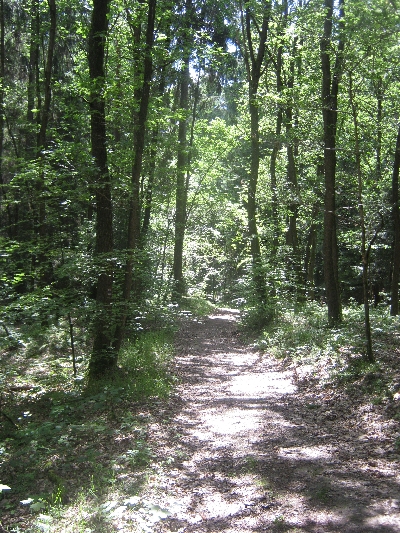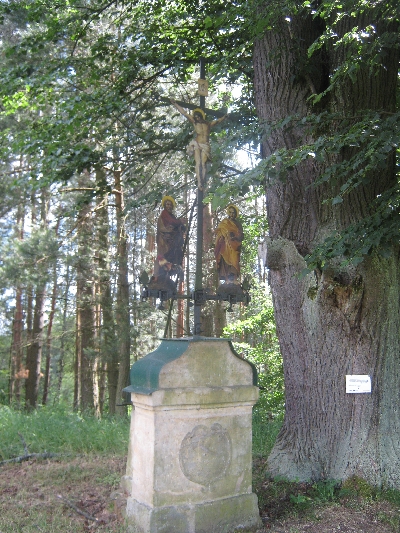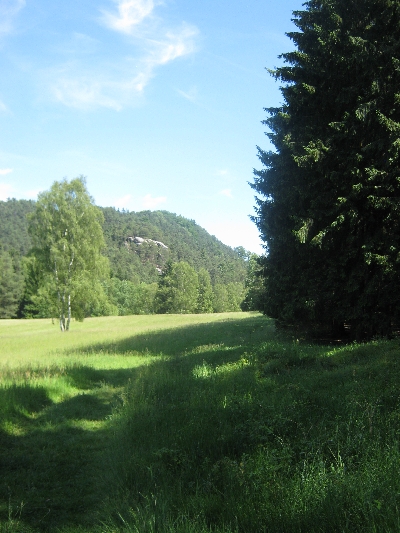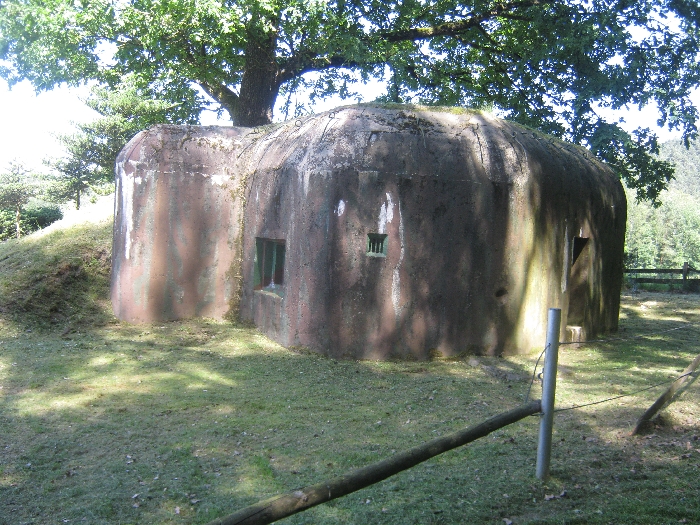
A few weeks ago, I took the bus northwards from Stará Oleška, through Srbská Kamenice, to the southern edge of Jetrichovice. From there, I made my way back to Srbská Kamenice, first following the blue and then the green waymarked routes.
The blue waymarked route leaves the road on the left, shortly after the bus stop, where the road goes to the right, zigzagging down to the centre of Jetrichovice. Initially it follows a gravel track which gives vehicular access to several houses, before becoming a footpath, heading into the forest.

After about one and a half kilometres, there is this wayside shrine or Calvary. It has recently been restored – the little plaque on the tree giving more details, but only in Czech 🙂

Shortly afterwards, the path descends into the village of Všemily. On the right is this former school which has been converted into a private house.

All along the route, the towering peak of Ružovský vrch is nearly always visible, seen here soon after the route crosses the road through the village and begins ascending the hills on the other side.

Slightly further along the path is this First World War memorial, declaring ‘Die Heimat ihren Söhnen‘ – a reminder that until 1918, this area was part of the Austro-Hungarian Empire and predominantly German-speaking. All of those commemorated have Germanic surnames.

After passing the village cemetery, the blue waymarked route heads into the forest once again, alongside towering sandstone rock outcrops of which this is one of the best examples.

At Pod Borovinou, I finally left the blue waymarked route and turned right onto the green waymarked route, seen here passing through grassland on the edge of the forest.

Along this path are two concrete bunkers, built by the Czechoslovak government in the late 1930s, as defences against possible Nazi invasion. I’m planning another blog post with more photographs and background about these structures. However, I have previously written about similar fortifications in the Orlické hory which you can read here.

The grassy path then gently descends to the northern end of Srbská Kamenice, with Ružovský vrch once more overlooking the scene.

My walk was completed by walking along the road to the centre of Srbská Kamenice where on this occasion, I patronised the bar-restaurant of Pension Vesna. This was my meal ahead of it being consumed 🙂 Best wishes for the enjoyment of my meal were expressed on the neighbouring window, in the two languages spoken by nearly all visitors.



